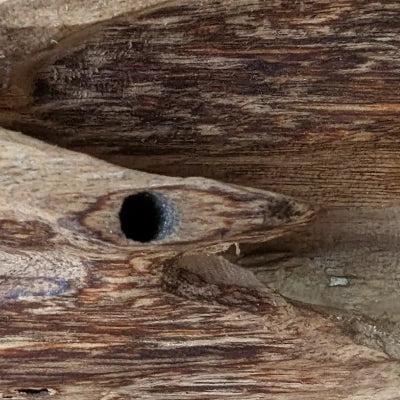Menu
-
-
F.A.Q
- How to identify genuine agarwood chip, natural or cultivated
- How to identify oil injection / absorption fake agarwood beads
- How to know if there are more than one oil in your oil
- How to make your wood bracelet or mala darker
- How to tell if an Agarwood bead sinks WITHOUT sinking it under water?
- How does back flow incense work and how do you burn it?
- Where to start if you don't know what agarwood is ?
- Why are you losing money if you buy seeds and plants?
- Which agarwood incense should I choose?
- Frequently Asked Questions
- Agarwood Related Articles
- Shipping
-
SHOP - Agarwood
-
SHOP - Other Fragrant Wood
-
SHOP - Incense Holder and Burner
-
- FREE Oud Oil guide
- Testimonials
- "Why did you buy this?"
- Contact us
- About Us
- +61430284329
- Login
-
English


The Multifaceted Uses of Agarwood Across Asia.
January 21, 2024 6 min read
Agarwood, a highly valued aromatic wood, has been used for centuries in various Asian cultures for its distinctive fragrance and medicinal properties. This article explores the diverse applications of agarwood in Malaysia, China, Taiwan, Japan, and Vietnam, highlighting its cultural and practical significance.
Agarwood in Malaysia: A Symbol of Tradition and Healing
In Malaysia, agarwood, locally known as gaharu, has a rich history of use across a spectrum of applications. These include its role in perfumery and fragrance, its medicinal and aromatherapeutic properties, and its significance in religious, ceremonial, and spiritual practices. Agarwood is used in various forms such as burnt offerings, idols, and rosaries, and is also valued for decorative carvings. The specific use of agarwood often depends on the quality of the wood and the cultural background of the user.
Its primary uses span across aromatic perfumery, medicine, and religious practices. The Malays burn chips and shavings for incense during prayers, while the smoke is also used as medicine. Agarwood is ground for libation at gravesides and shaped into pieces for spiritual purposes. Its oil, often mixed with coconut oil, is used as a liniment, and a boiled concoction of agarwood treats rheumatism and body pain. The Penan people of Sarawak use it for stomach aches, fevers, and as an insect repellent. Additionally, it's used in cosmetics, as a face mask for wrinkle treatment, and by Malay tribes to fumigate paddy fields

A cultivated Aquilaria Malaccensis tree
China: Agarwood in Medicine and Art
In China, agarwood serves both medicinal and artistic purposes. It is used to promote the flow of qi and treat a variety of ailments including asthma, diarrhoea, and skin diseases. Its properties are recognized as stimulant, anti-asthma, sedative, and aphrodisiac. Agarwood is also integral in religious practices, with incense sticks and coils burned for fragrance. Its natural shape is used in Fengshui, and it's a popular material for carving religious objects.

Agarwood natural art display
Taiwan: Agarwood in Religious and Cultural Practices
Taiwanese use agarwood primarily for religious purposes. It is fashioned into beads for wristlets or rosaries, and its incense and raw chips are burned by Buddhists and Taoists for self-purification. During traditional festivals and ceremonies, agarwood incense sticks are burned for safety and good luck. It is also a key aromatic ingredient in alcoholic drink, and high-end agarwood products are collected as a hobby.
India and Bangladesh: Agarwood in Perfumery and Ayurvedic Medicine
In India and Bangladesh, agarwood oil is distilled for perfumery and incense is use daily for worshipping.

A Hindi domestic shrine focused on a statue of Lord Ganesha
It is used in Ayurvedic medicine to treat a wide range of conditions, including digestive and respiratory issues, smallpox, and mental disorders. Agarwood is also used in funeral pyres and for preparing bodies for burial.
Khare, C.P. (Ed.). (2007) mentions Agarwood serves as an astringent, which is beneficial in contracting body tissues, aiding in reducing bleeding or secretion control. Its carminative qualities are effective in relieving gastrointestinal discomfort, such as gas and bloating.
Recognised for its antiasthmatic capabilities, agarwood is used in managing asthma symptoms, including easing wheezing and difficulty in breathing. It also acts as an antidiarrhoeal and antidysenteric agent, providing relief from symptoms associated with diarrhea and dysentery.
In treating conditions like gout and rheumatism, agarwood's anti-inflammatory properties play a crucial role in alleviating pain and inflammation. It is also utilized in addressing paralysis, potentially aiding in muscle function recovery.
Agarwood is valued as a stimulant in cases of sexual debility, where it is believed to enhance energy and overall vitality. Additionally, it is applied topically as a liniment for treating various skin diseases, offering relief and aiding in skin health.
Japan: Agarwood in Cultural and Medicinal Practices
Credit to James Compton and Akiko Ishihara, The Use and Trade of Agarwood in Japan
In Japan, agarwood is used in various forms for cultural, religious, and medicinal purposes. It is burned to produce a smoky perfume during cooking (this was in the past when they did not realise how valuable Agarwood was) and used as jinkoh incense in Buddhism. The culture of enjoying the scent of burning agarwood, known as soratakimono, is prevalent. Agarwood is also used in the ko-doh ceremony to appreciate its fragrance. Medicinally, it is used as an anaesthetic, to treat fatigue, and as a sedative.
The Origins and Cultural Significance of Agarwood in Japan
Agarwood, known as jin-koh in Japan, has been an integral part of Japanese culture, religion, and medicine for centuries. The first mention of agarwood in Japan dates back to 595 AD, as recorded in the Nihon-shoki (Chronicles of Japan). A notable incident involved aloeswood, a type of agarwood, drifting ashore on Awaji Island. Unfamiliar with its value, the locals used it as cooking firewood, only to be captivated by its enchanting fragrance. This incident led to the wood being presented to the Empress.
Prince Shotoku, at the royal court, identified the wood as jin-koh, a substance already known in Japan through its introduction alongside Buddhism in the 6th century via Korea. Agarwood's fragrance became a central element in Buddhist rituals and state ceremonies during the Nara period (710-794 AD), a practice that continued until the Meiji Restoration in 1868.
Agarwood in Feudal Japan: A Symbol of Wealth and Power
In feudal Japan, possessing jin-koh was a symbol of wealth and power. Legends tell of warrior nobles like Sasaki Douyo, who would burn large pieces of agarwood to flaunt his wealth.
Religious and Cultural Uses of Agarwood
In Buddhism, burning jin-koh wood chips or incense is considered the highest quality offering. This practice dates back to the introduction of Buddhism in Japan around 1500 years ago. The burning of incense is a purification ritual, especially around Buddha statues and during the reading of Buddhist sutras.
During the Heian Period, with deepening exchanges with China, the use of perfume, including agarwood, increased. Incense burning became widespread with the popularity of Buddhism and is still used in modern Japan at funerals and grave visits.
The Art of Incense Appreciation: Koh-doh
The Heian Period also saw the emergence of soratakimono, a pastime involving the enjoyment of burning incense. This practice was popular among the aristocracy and was featured in the novel "Genji Monogatari" (The Tale of Genji). The shift back to burning jinkoh wood itself occurred at the end of the Kamakura period (1185-1333), leading to the formalized art of fragrance appreciation, koh-doh, in the Muromachi Period (1336-1573).
Koh-doh (sometimes referred as Kodo), the ceremony of appreciating agarwood fragrance, became a highly ritualized practice accessible mainly to imperial and high-caste families. This art form is closely connected to other Japanese arts like the tea ceremony and ikebana. Initially, koh-doh was a male-dominated practice, but during the Edo period (1603-1867), it became known as a "suitable feminine pleasure," allowing elite women and courtesans to participate.
Koh doh (Way of Incense) Schools and Modern Developments
Several schools of kodo developed during the Edo period, each with its unique approach to incense appreciation. These teachings were verbally passed down, a tradition that continues today. The popularity of koh-doh declined with the Westernization of Japan during the Meiji period, but efforts in the 1920s and 1960s helped reintroduce and demystify the art.
Today, Koh Doh remains a vital element of high Japanese culture, with television specials helping to increase its popularity. However, the high cost of quality jin-koh limits its widespread use.
Agarwood in Japanese Buddhism
Different Buddhist sects in Japan have preferences for high-grade sen-koh preparations and wood chips. The demand for jin-koh (Agarwood in Japanese) in religious practices remains significant, although it has declined compared to its peak during Japan's economic bubble.

In summary, agarwood's journey in Japan, from a cooking firewood to a revered element in religious and cultural practices, illustrates its profound significance in Japanese history and society.
Vietnam: an Agarwood place
The use of Agarwood in Vietnam is similar to other countries. Burn as incense and use it as medicinal. From different sources and articles, I wrote a story about it around 2 years ago. Click here to visit
To sum up
Agarwood's versatility and significance in Asian cultures are profound. From being a key component in religious rituals and traditional medicine to its use in perfumery and art, agarwood continues to be a treasured resource across Malaysia, China, Taiwan, Japan, and Vietnam. Its multifaceted applications not only highlight its practical value but also underscore the deep cultural connections and traditions that it embodies.
Reference
Chiang, L. K. (Ed.). (2023). Prospects and Utilization of Tropical Plantation Trees. Routledge. Link
Khare, C.P. (Ed.). (2007). Indian Medicinal Plants: An Illustrated Dictionary. Springer New York. https://doi.org/10.1007/978-0-387-70638-2
Leave a comment
Comments will be approved before showing up.
Also in News

What is Tasbih? The Deep Meaning of Subhan Allah and the Role of Prayer Beads
November 09, 2025 4 min read

